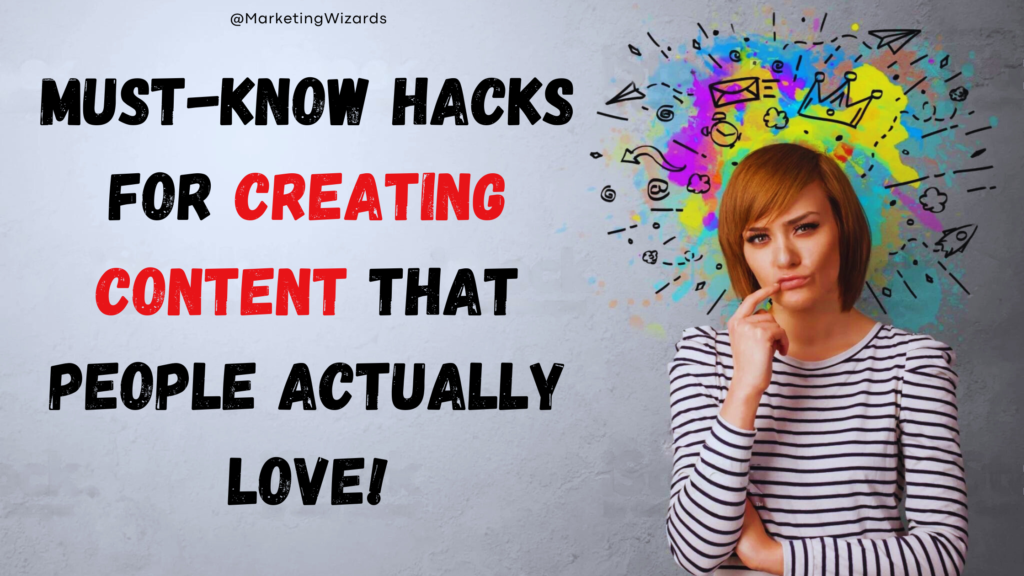Introduction
In today’s digital world, both companies and content providers rely on compelling content to succeed. The capacity to attract and hold the audience’s attention is vital. This blog post attempts to provide some tips that can help you master the art of generating compelling content.
Table of contents
Definition of Engaging Content
The creation of engaging content refers to the creation of material that holds interest, provides valuable information, and resonates with the target audience. Its purpose is to captivate attention and inspire action. Various forms of engaging content include blog posts, social media updates, videos, infographics, and more.

The production of content that actually resonates with the target audience increases engagement, generates leads, and, eventually, converts potential consumers. An engaged audience is more inclined to share the material, allowing you to reach new audiences, raise brand exposure, and develop authority in the sector.
Understanding Your Audience
Understanding the audience is a critical secret to creating engaging content. Gaining insights into the audience’s interests, preferences, and pain points enables the creation of tailored content.

The following tips can aid in understanding the audience:
Know your audience’s interests and preferences
Gaining a thorough grasp of the target audience’s interests and preferences is essential for developing compelling content. Thorough research enables content authors to gain useful insights into what interests their target audience.
Producers benefit greatly from social media platforms and online forums, which allow them to evaluate and analyze the preferences and dislikes of their target audience.
Conduct surveys and research
Conducting surveys and research is an active approach to gaining a comprehensive understanding of the audience’s preferences. Content creators can leverage tools such as SurveyMonkey, Google Forms, or Facebook polls to collect data and acquire valuable insights.
Surveys provide direct feedback from the audience, offering creators a way to gauge their preferences, interests, and expectations.
Analyze social media insights and website analytics
Analyzing social media data and website analytics may help content authors learn a lot about their target audience. Creators may acquire significant insights into their audience’s qualities and preferences by analyzing data on demographics, geography, and behavior.
Social media platforms use engagement indicators such as likes, shares, and comments to assist content producers in determining the sort of material that connects with their audience.
The Power of Storytelling
Storytelling is a great technique for content production. Stories are memorable and relevant, and elicit emotions that resonate with the audience. The following strategies can improve narrative effectiveness:
Importance of storytelling in content creation
The inclusion of storytelling in content creation holds immense significance, as it captivates the audience and establishes a strong emotional connection. Stories have the power to provide context and depth to the message being conveyed, making it more relatable and engaging for the audience.
Incorporating personal anecdotes and experiences
Using personal tales and experiences in content engages the audience, fosters trust and enhances authenticity. When content producers share their own stories, they establish a personal connection with their audience, allowing them to relate on a more profound level.
Tips for effective storytelling
Crafting great tales necessitates attention to certain tactics that connect and resonate with the audience. One crucial advice is to keep the narrative short and straightforward so that the audience can simply follow along. Incorporating descriptive language helps to paint vivid mental images, capturing the audience’s imagination and producing a more immersive narrative experience.

Another valuable tip is to create relatable characters within the narratives, allowing the audience to emotionally connect and invest in the story’s outcome.
Creating Visual Appeal
Visual appeal plays a vital role in creating engaging content. Visuals assist in conveying messages, breaking up text, and capturing the audience’s attention. Consider the following tips for creating visual appeal:
Importance of visual appeal in engaging content
Visual appeal plays a critical role in enhancing the overall engagement of content with the target audience. High-quality visuals not only make the content more visually appealing but also improve its readability, making it easier for the audience to consume and understand the information being presented.
Additionally, visuals help to increase the shareability of content, as people are more likely to share visually appealing material with their networks. Furthermore, incorporating high-quality visuals lends credibility to the content, positioning the creator as an authority in the subject matter.

Using high-quality images, videos, and graphics
The utilization of high-quality visuals, such as images, videos, and graphics, significantly contributes to the overall impact of the content. By employing visually appealing elements, content creators can capture the audience’s attention and create a lasting impression. High-quality visuals also add a professional touch to the content, making it visually attractive and engaging.
It is crucial to select images, videos, and graphics that are relevant and directly support the content’s message, as this helps to enhance comprehension and maintain the audience’s interest. Avoiding the use of generic stock images ensures originality and authenticity, further enhancing the content’s quality and uniqueness.
Choosing the right colors and font styles
The careful selection of colors and font styles is critical in generating visually attractive material. Colors can provoke various feelings and moods, establishing the tone of the material.
By choosing appropriate colors that align with the brand’s personality and message, content creators can effectively convey the desired sentiment and enhance the overall visual experience. Similarly, font styles contribute to the content’s readability and aesthetics. Selecting fonts that are legible and consistent throughout the content maintains a cohesive and professional appearance.
The Key Elements of Copywriting
Copywriting is the art of creating persuasive and compelling written content. It aids in crafting engaging content that effectively sells. Consider the following key elements of copywriting:
Using headlines and subheadings to capture attention
The strategic use of well-crafted headlines and subheadings is critical for catching and holding the audience’s attention. Content authors recognize the value of writing clear, succinct, and attention-grabbing headlines that attract readers’ interest right away.
These headlines act as a doorway, inviting readers to dive further into the text and discover what lies beneath. Effective subheadings help readers navigate the text by breaking it down into digestible pieces and retaining their attention throughout the piece.

If you’re wondering about the scope of copywriting, I suggest you read this > Copywriting a Good Side Hustle? Unveiling the Untold Secrets!
Writing compelling introductions and conclusions
Compelling introductions serve as a gateway to captivate the audience from the very beginning. Skillfully crafted introductions hook the readers, presenting an intriguing premise and setting the stage for what’s to come. They provide a glimpse into the value and relevance of the content, compelling the audience to invest their time and attention.
Utilizing persuasive language and emotional appeals
The utilization of persuasive language and emotional appeals is a powerful technique to establish connections with the audience and motivate them to take action. Content creators understand the impact of carefully chosen words, employing language that resonates with the readers’ emotions and triggers their interest.
Persuasive language techniques include the use of powerful words that evoke strong emotions, making bold claims that capture attention, and incorporating testimonials that provide social proof.
Conclusion
In conclusion, the creation of engaging content is an art form that requires an understanding of the target audience, the incorporation of storytelling techniques, the creation of visual appeal, and the utilization of copywriting strategies.
By applying the secrets shared in this blog article, content creators can elevate their content creation efforts to the next level.
Suggested Read
How Visuals Make A Difference In Content Marketing
- Get Access to 25+ Free SEO Toolbox Pro by Marketing Wizards
If you find this article helpful, please notify me by writing a comment. I’d love to hear your thoughts!
Stay tuned, and good luck!





